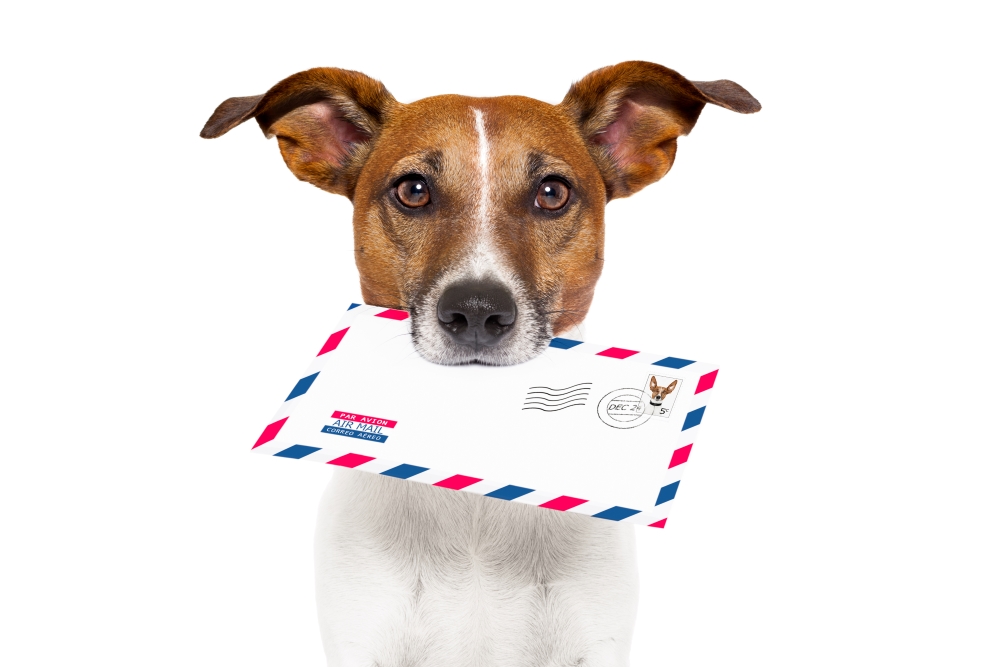And How to Keep It There.

This is part One of a series. Part 1. Part 2. Part 3. Part 4 (last).
____________________
I received an email from a PIFW reader a few weeks ago, asking me how I managed to stay on top of my emails. She knew how busy I was, yet I always got back to her fairly promptly.
I did give her some very rough ideas and tips, that will be included in this more comprehensive post.
I’ve never written about email management before and I’m not sure why. It’s not because I’m terrible at it.
The system I have been using to manage my email I developed years ago. I’ve been on the Internet since 1994, only two years after it opened to the public. I’ve had time to hammer out email management principles that still serve me well today.
I was using inbox zero as a principal long before it became a thing.
So why haven’t I written about it?
When inbox zero did move to the forefront of everyone’s attention, there were a lot of gurus talking about it. It seemed silly to stick my hand up in the air and add to the cacophony.
But I’ve learned, lately, that even one more voice, speaking about a topic from their unique viewpoint, using different language and phrasing and describing thing a different way from everyone else, can sometimes help people get a real grip on the topic when before, they were flailing. It’s possible that the way I talk about email management might give you an aha! moment, and a new idea on how to handle your email that resolves some ongoing issues for you.
As usual, my own approach to dealing with email is low-tech, strategies-based, rather than using the latest and greatest (and oh! So expensive!) email solution. There are a lot of “solutions” out there. I peruse them all every now and again, because I’m not 100% happy with the software I do use.
But nothing, no system or new email app, that I’ve seen in quite a number of years, provides nearly as many features as the one I have, so I continue to put up with it, despite its flaws.
What does an empty inbox get you?
You can call it “Inbox Zero” or whatever you want. But the central tenant for how I control my email is exactly that; working toward an empty inbox.
There are a number of pay-offs for keeping zero emails in your inbox, yet most people I know use their in-box as a semi-permanent storage and filing area, and a default task manager.
I’ve seen corporate workers with ten years of emails in their inbox, stored under folders, sub-folders and sub-sub-folders. I don’t know how they found anything. But they were rather proud of their organization. And I’ll give them that: technically, their inbox (which was the top level folder) was empty.
But that’s not what I mean by an empty inbox. I mean, you should be aiming to not store any email in your email application. None at all.
David Allen, in Getting Things Done, suggested thinking of your email inbox as merely another in-tray, something where potential tasks accumulate, that you should process regularly and bring the tasks out of the inbox and into your Getting Things Done system.
Which is a good idea, as far as it goes. But not everything that arrives via email is a potential task. So you have to know what to do with all those emails, too.
What else does an empty inbox give you?
Stress relief
Sometimes, on very busy days, the emails in my in-box can build up until they’re running “under the fold” (long enough to require scrolling to see them all). This can happen during my day because I generally batch-process emails at a set time during the day, even though I might check emails throughout the day.
The emails I don’t immediately delete for one reason or another (which we’ll get to), sit in the in-box until my batch processing time. If they do build up enough to roll over to the next screen, I get very antsy, and anxious to clear out the box. I can feel the pressure of the various tasks represented by those emails crunching down on me.
And that’s just a screen’s worth of emails!
If you have emails in your inbox that go on for screens and screens, the pressure to deal with them hits you every single time you look in your inbox. Ditto, if you have even more unanswered/dealt-with emails in your sub-folders.
If the pressure gets bad enough, you avoid checking email. Or you may try the nuclear option of deleting everything in your inbox, figuring who cares? It’s been so long since you got the emails and no one has screamed at you….
But there are real consquences to deleting emails out of hand these days. More and more legal documentation gets set via email, now, including receipts, and signed contracts. Plus emails themselves are now legitimate tax documents, saved as PDFs (this varies from country to country, so check your country’s tax laws before relying upon my statement).
And there is a wealth of other information and opportunities you’ll lose simply by delete all your emails.
The nuclear option is not a good idea, not anymore. It wasn’t even when people were resorting to it ten years ago, but now it’s a very bad idea.
While, when you clear out your in-box, there is a distinct and lovely dopamine hit that comes with it. Plus, a complete cessation of pressure. That relaxation, that relief alone, is worth staying on top of your emails.
The first time you sit down to clear out your in-box will be painful. You’ll be embarassed and may even find there are some curly financial or legal issues you have to deal with as a result. But once you’ve crawled painfully throughgh and cleared out the emails in your inbox for the first time, you’ll feel light-headed with relief and brimming with determination to never let it get that bad again.
And by following a few simple “rules”, you won’t.
Control over your work
If you don’t know what’s buried in your inbox, or forget about the email that has now dropped under the fold, you could end up in some tricky situations, including legal ones. Often, there might be fines involved.
One of the most common ones I hear about are authors who ignore emails from services or software-as-a-service that are up for renewal, so that the bill comes as a nasty shock on their bank account statements. And if they were planning on cancelling the service, they’re now stuck with it for another year or month, depending upon how long ago the renewal went through…
Have you missed offers from editors? Invitations to join author cooperative promotions? An email from your mother?
Security
Email services crash. Accounts fail. Archival files corrupt.
I speak from sad experience. I’ve been using Microsoft Outlook for years, simply because it provides more features I want than any other program. But I don’t particularly like it. I especially don’t like that the PST file that stores all your email and settings tends to stop working without warning, forcing you to rebuild your email accounts from scratch. A corrupt PST file also means you lose all the email in that file.
True story. One of those big corporation people I knew who had thousands of emails in their email application, all carefully filed in sub-folders and sub-sub-folders, etc? Yeah, their PST file corrupted, and they lost everything.
I watched them crying in the lunch room, while IT techs tried uselessly to recover any emails at all (they couldn’t) and took the lesson to heart.
Gmail accounts can disappear.
And, also a true story that is happening right now, my site host has gone dark and silent, and all the servers are down, so any domain email (like, for example, tracy@productiveindiefictionwriter.com), is currently inaccessible. Luckily, I was already in the process of moving my sites to a new host, so this particular disaster hasn’t impacted me largely – I had just two small sites left to migrate. But for everyone else on those shared servers…well, it’s been 3 days so far. Are we going to get our sites and the associated email back? Jury is out on that one, still.
These days, when emails are accepted as legal documents, when contracts, tax documents and more are delivered via email, you can’t afford to lose your inbox’s worth of emails, shrug and start again.
An empty inbox means your emails and the documentation they provide are safe.
An empty inbox removes temptation to linger there
If you have more than a couple of emails in your inbox, and you happen to flip over to your email program (despite all the productivity advice warning you what a bad idea that is), then you might be tempted to linger in your inbox and maybe read a couple or more emails, perhaps even answer one….
Because answering or dealing with email seems a lot easier than writing fresh words, you stay there, and spend your writing time hip deep in months-old emails, while telling yourself you’re being productive.
If, on the other hand, you only have two emails in your inbox, and even if you hit refresh for new emails, you might end up with maybe three emails…and no excuse to stay in that program.
An empty inbox will nudge you back to your writing because, well, there’s nothing to do here…..
_________________________
Next week, I’ll talk about how to get your inbox to empty, and how to keep it there.

Write More, Faster Than Ever Before | Are You Prolific?
Editing Your Next Novel? Mark Posey offers fast, writer-friendly edits with zero drama. Check out services »
